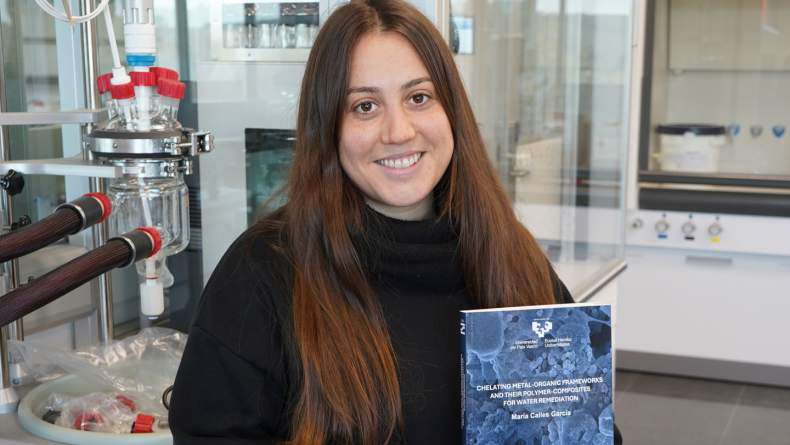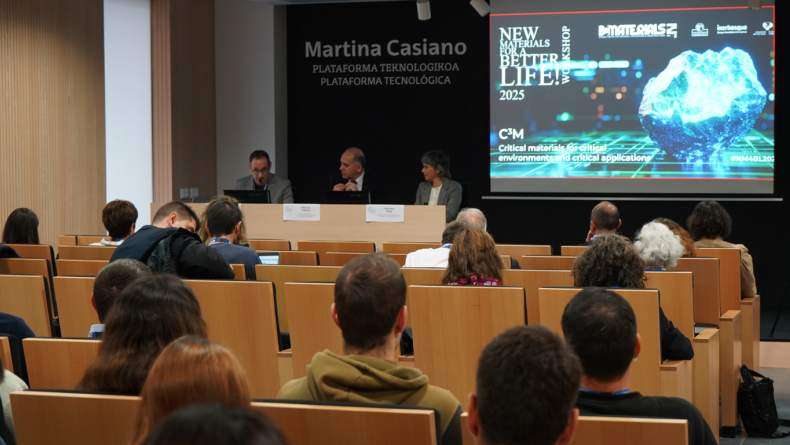BCMaterials Fortnightly Seminars #34

ESTIBALIZ LEGARRA
(BCMaterials)
INFLUENCE OF THE ORDER-DISORDER TRANSITION ON THE MAGNETIC PROPERTIES OF Fe75Al25-xSix ALLOYS
The influence of the different crystal structures and the variation of the lattice parameter on the evolution of the magnetism in the order-disorder transition produced by crushing and mechanical milling in the intermetallic Fe75Al25-xSix alloys has been systematically studied by means of XRD measurements, Mössbauer spectroscopy and magnetic measurements. X-ray and Mössbauer data show that mechanical deformation induces the disordered A2 structure in these alloys. The results indicate that with the addition of Si to binary Fe75Al25 alloy the mechanical deformation needed to disorder the alloys increases. At the same time the variation of the lattice parameter due to the disorder is reduced as Si is added indicating clearly that Si addition opposes the large volume increase found in FeAl alloys with deformation. The magnetic measurements indicate that there is a complex behaviour in ternary alloys with an opposite influence of Si and Al during the order-disorder transition. However, when the transition is fulfilled there is a linear relationship between structural and magnetic parameters.MARÍA SAN SEBASTIÁN
(BCMaterials)
POLYMER ELECTROLYTES
Ionically conducting solid materials display numerous advantages over their liquid counterparts, ranging from practical consideration, such as leakage, to structural factors, such as ease of miniaturization. Polymer ionics was a relative latecomer to the field of solid state ionics, but it was already made in 1973, thin-film polymers would have significant potential in all-solid-state electrochemical cells. The term “polymer electrolyte” can be applied to a broad family of ion-conducting materials: a system dissolving in a high-molecular weight polar polymer matrix, a gel electrolyte, formed by dissolving a salt in a polar liquid and adding an inactive polymeric material to obtain mechanical stability, a plasticized electrolyte, usually obtained by the addition of small amounts of a liquid of high dielectric constant to a solving polymer electrolyte in order to enhance its conductivity, an ionic rubber, compromising a low temperature molten salt with a high molecular weight polymer.
We are developing a hybrid electrolyte including a high conductive salt in a polymer matrix with an intimate contact of the different phases and physical attachment of the inorganic salt in the conductive organic polymer.
Related news
María Calles, nueva doctora de BCMaterials
Queremos felicitar a María Calles García por haber obtenido su doctorado en Ciencia y Tecnología de Materiales por la UPV/EHU. El 4 de diciembre María realizó una brillante defensa de su tesis...Charla invitada con investigadores del Instituto de Microelectrónica de Barcelona (3 de diciembre)
El próximo 3 de diciembre, a partir de las 12:00 en el auditorio Martina Casiano de Leioa, BCMaterials recibirá a los investigadores titulares del Instituto de Microelectrónica de Barcelona (IMB-CNM...Charla invitada con Liu Yao sobre baterías de metal-litio (2 de diciembre)
El próximo lunes 2 de diciembre, Liu Yao, profesor del Shanghai Institute of Applied Physics presentará una charla invitada en BCMaterials titulada ‘Li Metal Batteries: From Liquid to Solid-State’....Éxito del workshop anual de BCMaterials, dedicado a materiales críticos
La exitosa edición 2025 del workshop anual de BCMaterials reunió el pasado 19 de noviembre en Leioa a un centenar de asistentes para examinar el estado del arte y debatir sobre los materiales...



